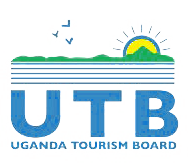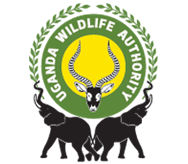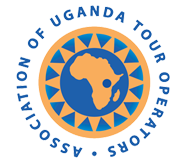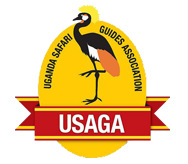If you are a primate fanatic or planning to discover the true behavior of Mountain gorillas in their natural environment, then consider booking our Uganda Gorilla Safaris. With the right information about where to undertake Uganda gorilla tours, the best time for the trip, what to carry for the tours, and many others, travelers are assured of achieving a memorable gorilla trekking experience.
Uganda Gorilla Tours are undertaken in two iconic destinations; Bwindi National Park and Mgahinga Gorilla National Park. The former is so far the most sought-after choice as it shelters the greater concentration of mountain gorillas in addition to a wide range of sleeping options, thus better suited for Uganda Gorilla Tours.
The destination you finally choose to undertake Uganda Gorilla Tours largely depends on your overall travel itinerary as well as the time you can spare. The good news is that the prices of gorilla permits as well as the chances of spotting the mountain gorillas across the two destinations don’t differ.
It’s worth noting that these two Gorilla National Parks are nestled within the deep southwestern corner of the country, close to the border with Rwanda as well as the Democratic Republic of Congo. Interestingly, the majority of the country’s outstanding safari destinations are found in the southwest and western regions thus making it easier to spice your Uganda Gorilla safari experience with a wildlife safari, cultural experiences, and mountaineering, to achieve unforgettable experiences.
Bwindi National Park is the main destination where Uganda gorilla safaris are best done. For this park, the habituated gorilla groups are trekked from four sectors/regions; Nkuringo, Ruhija, Buhoma as well and Rushaga, and each of them boasts unique families, levels of difficulty, and varied terrain.
Setting out from one of the four trekking sectors/regions within the jungle, eight visitors undertake a guided hike through the forest in search of one of the 21 habituated gorilla groups. Guided by expert rangers attached to the Uganda Wildlife Authority, travelers are introduced to the unique ecology of this jungle as well as its varying landscapes while searching for the mountain gorillas. The Ranger’s guides take visitors while keeping in communication with the trackers who trail the giant apes from daybreak. It is the trackers’ directions that will lead guides toward mountain gorillas, hence making the process that would have taken the entire day to become shorter.
Circa the border of Rwanda is the small and beautiful Mgahinga Gorilla National Park, a perfect cross-border destination with Volcanoes National Park of Rwanda. Known as the place where gold meets silver, it is here that visitors are also introduced to the golden monkeys during Uganda gorilla tours. Its perfect location also makes it possible to enjoy double gorilla treks by combining Bwindi gorilla treks via Nkuringo trailhead plus Mgahinga gorilla treks.
It doesn’t receive the attention as Bwindi, hence its relative seclusion in addition to the treks being less challenging. Unfortunately, there are only 8 gorilla permits for this Park (given the fact that it has only one habituated gorilla group) and therefore it accounts for only 10% of Uganda Gorilla Tours. For several years, Mgahinga Gorilla National Park has been taken as the “over-flow” destination for the famous Bwindi Impenetrable National Park whereby visitors are booked when permits in Bwindi are out of stock. However, this is slowly changing as visitors would rather start their gorilla trips from Kigali and simply cross over to Mgahinga Gorilla National Park where permits go for only $800 versus the $1500 per person for Volcanoes National Park.
Mgahinga National Park’s beautiful location close to Bunyonyi and Mutanda lakes is another reason why it should be your favorite place for undertaking Uganda gorilla safaris you have an opportunity to unwind after your strenuous gorilla trekking adventure. Additionally, adventure-seekers who wish to add mountain climbing to their Uganda gorilla tour can take on hikes at any of the three Virunga Volcanoes-Gahinga, Sabyinyo, and Muhabura with between 5 and 9 hours of hiking.
Only morning gorilla tours are conducted in each of the National Parks, normally starting by 8:00 am after a briefing session, and are limited to small groups of only 8 visitors per habituated gorilla family. This limit is applied to reduce the chances of behavioral changes as well as a way of ensuring the safety of the giant apes from air-borne pathogens.
Right from the beginning, the dramatic steep slopes of southwestern Uganda as well as the beautiful terraced Volcano sides prove an intimidating challenge. Remember this is the typical natural environment of mountain gorillas thus expect hiking through the dense, tangled vegetation, muddy hills, and slippery rocks and descend into rugged valleys. The high elevation as well as the challenging terrains alone makes the treks strenuous but the reward that comes thereafter makes the challenge worthwhile and the entire process magical.
The ranger guides take visitors through the process with constant communication with Trackers and the sight of gorilla nests signify that the gorilla family is close by. At this point, cameras have to be properly set and excitement becomes unstoppable at this point. The sound of the rustling of tree branches, calls, whoops, screams, and sights of them feeding in the hidden vegetation is a memory to behold. Once found, visitors have a maximum of one hour with them. However, if this time isn’t enough, feel free to book the “Gorilla Habituation Experience” where you will be provided up to four hours with the Mountain gorillas (at a higher price).
When you hear the word gorilla trekking, just envision walking through formidable terrains marked by steep ridges and deep valleys while following trails with tangled vegetation for 30 minutes to over 6 hours. Expect even tougher trails during the rainy season because of the slipperiness of trekking routes. Mountain gorillas as their name live high in the mountains with cold temperatures and thick rainforests.
Uganda Gorilla trekking permits presently cost only $800 per person for foreign non-resident trekkers, $700 for foreign resident trekkers as well as Shs.250,000 for the East African citizens. Uganda gorilla permits were discounted during the low season but one thing that has never changed is the fact that gorilla permits are always in high demand during the peak season therefore booking for permits has to be done several months before the planned trekking date.
Even with this difference in gorilla permit prices and subsequent increment of the same in Uganda, they are still lower compared to Rwanda gorilla trekking permits that go for a hefty $1500 per person (at the time of writing). Permits are not refundable or transferable but are issued by the Uganda Wildlife Authority, although visitors can book through credible tour operators.
Before answering the question of the best time of the year to go for Uganda Gorilla Tours, you need to understand that the two forests sheltering mountain gorillas experience an Equatorial climate hence temperatures generally don’t change significantly throughout the year. This therefore means that a gorilla trekking safari in Uganda can be enjoyed all year round. However, the months of March to May and then October to November are significantly wet with heavy downpours, muddy and slippery forest paths as well as denser vegetation. All these conditions combined with already steep slopes and rugged terrains make these months slightly unfavorable for Uganda Gorilla Tours. However, this doesn’t mean that gorilla treks aren’t undertaken. Tourists who choose this season are likely to enjoy discounts on places of lodging because most accommodation facilities provide low-season discounts.
The months of January, February, June, July, August, September, and December are relatively drier with little or no rains hence making treks more favorable. Gorilla permits are limited during these months because most visitors prefer this time of the year. Nonetheless, gorilla permit prices are fixed throughout the year and therefore your choice of season should be determined by the availability of gorilla trekking permits as well as the overall itinerary beyond gorilla trekking adventures.
Walking through the dense rainforest thickets in Mgahinga and Bwindi National Parks requires basic-moderate fitness levels and trekkers have to be always prepared for downpours, regardless of season. Make sure that you never forget to pack gardening gloves for protection against pricks/scratches while hiking, health snacks, robust waterproof hiking boots, a first aid kit, a safari hat, a long-sleeved shirt, and safari pants for protection through the thickets, a rainproof poncho, sunglasses, long cotton socks to tuck-in the trousers, pair of binoculars, a good camera that has no flash, toiletries, thick sweater to keep warm during chilly mornings and evenings and a backpack. On the trekking day, carrying enough drinking water, a walking stick, and hiring a porter is recommended during gorilla treks in Bwindi impenetrable and Mgahinga National Parks.







